Accepted Scientific Name: Ferocactus emoryi (Engelm.) Orcutt
Cactography 5. 1926 Orcutt
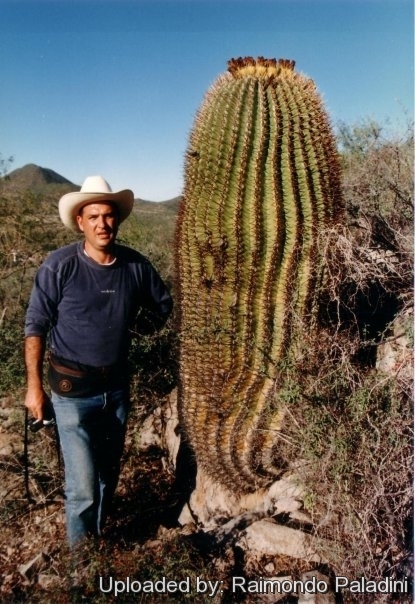
Ferocactus emoryi subs. covillei Photo by: Raimondo Paladini
Origin and Habitat: It is native of the lower deserts of Arizona (Yuma, Pima and Maricopa Co.) and Mexico (Sonora).
Habitat: Hillsides, wash margins, alluvial fans, mesas, or flats, gravely rocky or sandy soils, rocky slopes and adjacent bajadas, Sonoran desert scrub, igneous substrates; 0-1200 m; Gravely, sandy, or rocky soils of hillsides, alluvial fans, and wash margins at 450 to 750m elevation.
Synonyms:
See all synonyms of Ferocactus emoryi
Common Names include:
ENGLISH: Coville’s Barrel Cactus
Description: F. covillei( = F. emoryi) is a solitary barrel cactus except in case of injury to the growing tip, it lacks the lower radial spines of F. wislizenii and F. acanthodes but has similar heavy, ridged, hooked central spines.
Stems: Erect, globular when young to a stout cylinder when older, 30-90(-250) tall × 30-60 (100) cm in diameter; tubercled when young later forming ribs.
Ribs: (15-)21-32, shallowly notched immediately above each areole.
Areoles: oval with brown wool, 2-2.5 cm apart.
Spines: 6-10 per areole, reddish, reddish grey, or horn colored, all robust and rigid, more than 1 mm diam.;
Central spine: 1, curved slightly to fully hooked, (hooked only on relatively young plants), heavy, roughly cross-ribbed, annulate, thick, adaxially flat, 55-95(-130) long × 2.5-4 mm. in cross section.
Radial spines: 5 to 9 similar to central, spreading, not hooked, 2.5 to 5cm long.
Flowers: Reddish outside, brilliant red inside, 6-7.5 × 5-7.5 cm; inner tepals brilliant red [or occasionally yellow]; stigma lobes brilliant red.
Fruits: Persistent, oblong, scaled, 2,5-5cm long × 25-35 mm long in diameter with the dried remains of the flower atop, ± readily dehiscent through basal pore, bright yellow, 50, leathery or fleshy, locule dry, hollow except for seeds. Often the fruit are broken into and the seed eaten by birds or rodents.
Seeds: 2 mm. in diameter, black.
Remarks: The species name F. covillei was used to indicate the plant originary found in southwestern Arizona, but they are in fact almost identical and not easily distinguishable from F. emoryi to which this plant must be rightly placed.
Subspecies, varieties, forms and cultivars of plants belonging to the Ferocactus emoryi group
Notes: Ferocactus emoryiSN|21503]]SN|21495]] has a confused taxonomic history. The name is based on Echinocactus emoryiSN|21496]]SN|21496]], which was published twice by Engelmann, each involving a different species. Engelmann’s first use of E. emoryi Ferocactus wislizeniSN'>16130]SN|16130]] in eastern Arizona is rejected as provisional and therefore invalid. However, Engelmann’s second use of E. emoryi was a valid publication, and it unambigously pertains to the species in southwestern Arizona that Britton and Rose unncecessarily re-named as Ferocactus covilleiSN|21495]]SN|21503]].
Bibliography: Major references and forther lectures
1) Edward Anderson “The Cactus family” Timber Press, Incorporated, 2001
2) James Cullen, Sabina G. Knees, H. Suzanne Cubey "The European Garden Flora Flowering Plants: A Manual for the Identification of Plants Cultivated in Europe, Both Out-of-Doors and Under Glass" Cambridge University Press, 11/Aug/2011
3) David R Hunt; Nigel P Taylor; Graham Charles; International Cactaceae Systematics Group. "The New Cactus Lexicon" dh books, 2006
4) N. L. Britton, J. N. Rose “The Cactaceae. Descriptions and Illustrations of Plants of the Cactus Family.” Volume 4, The Carnegie Institution of Washington, Washington 1923
5) Curt Backeberg: “Die Cactaceae: Handbuch der Kakteenkunde” Volume V, Gustav Fischer Verlag, Stuttgart New York 1982–1985
6) Sara Oldfield “Cactus and succulent plants: status survey and conservation action plan” IUCN, 1997
7) Clive Innes, Charles Glass “Cacti” Portland House, 01/May/1991
8) Burquez Montijo, A. 2013. Ferocactus emoryi. The IUCN Red List of Threatened Species. Version 2014.2. <www.iucnredlist.org>. Downloaded on 11 November 2014.
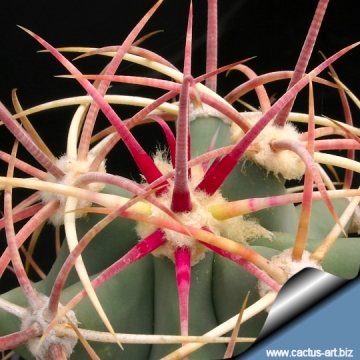 The clean, sparsely spined appearance leads to a very attractive plant. Photo by: Cactus Art
The clean, sparsely spined appearance leads to a very attractive plant. Photo by: Cactus Art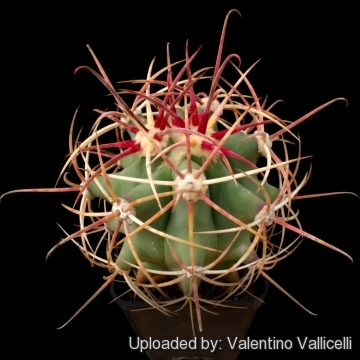 The spines sit on prominent nipples when young which will fade into the rib with age. Photo by: Valentino Vallicelli
The spines sit on prominent nipples when young which will fade into the rib with age. Photo by: Valentino Vallicelli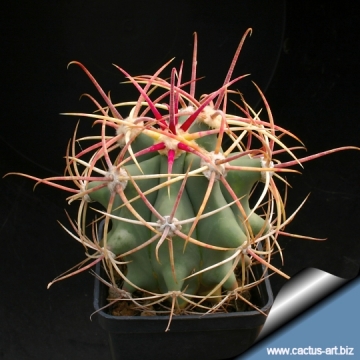 Ferocactus emoryi subs. covillei Photo by: Cactus Art
Ferocactus emoryi subs. covillei Photo by: Cactus Art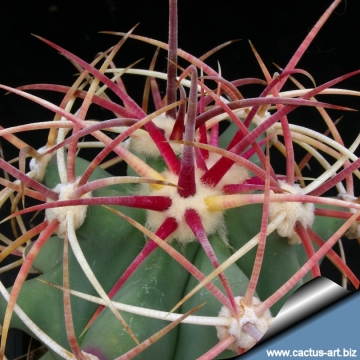 Ferocactus emoryi subs. covillei Photo by: Cactus Art
Ferocactus emoryi subs. covillei Photo by: Cactus ArtCultivation and Propagation: Slow growing to start but does well under cultivation. Use very draining soil, water during the aestival growth cycle (this plant need plenty of water) But needs to be avoided wetting the bodies of these plants while they are in sunlight. A wet cactus in the sun light can cause sun burning which can lead to scars or even fungal infections and death.
Needs full sun. Keep dry at 10°C in winter, but can tolerate sporadic light frost.
Propagation: Seeds are the only way of reproducing.
Warning: The spines that hook around can graph you if you get too close.














